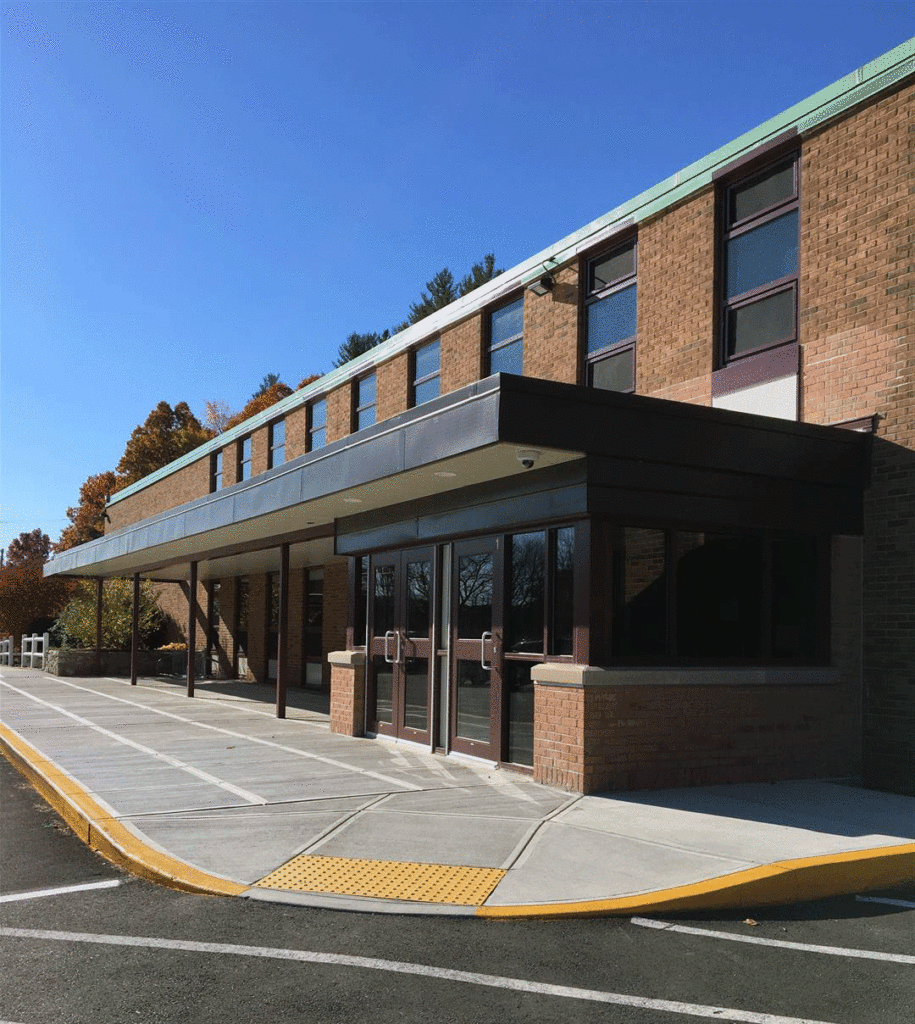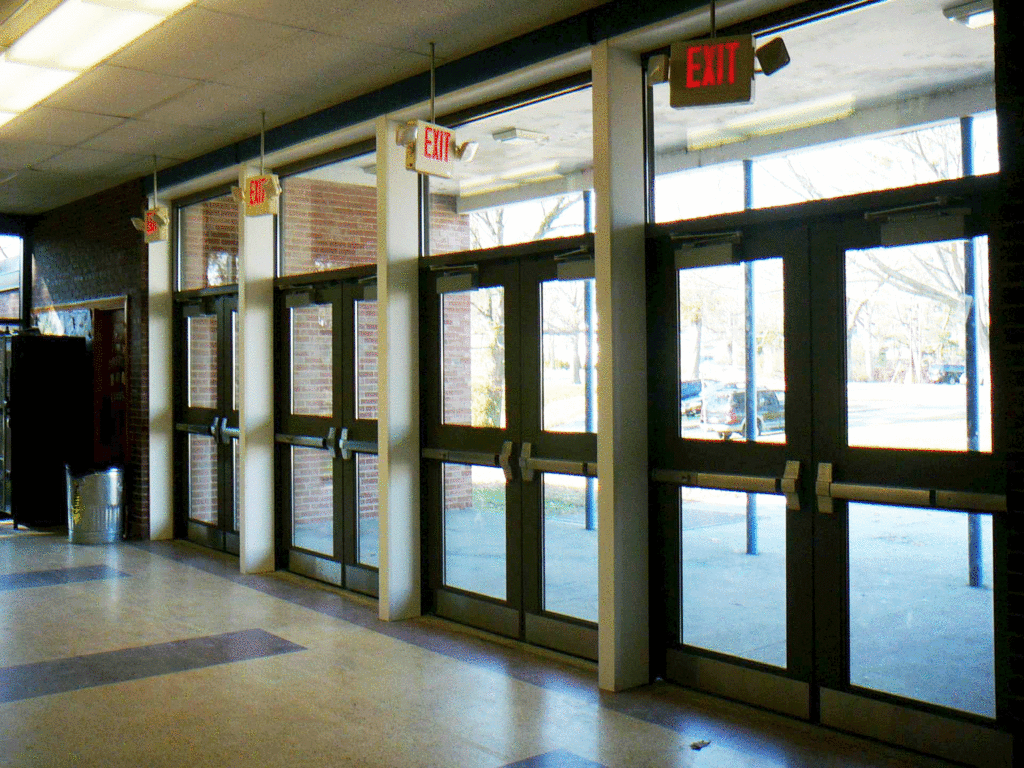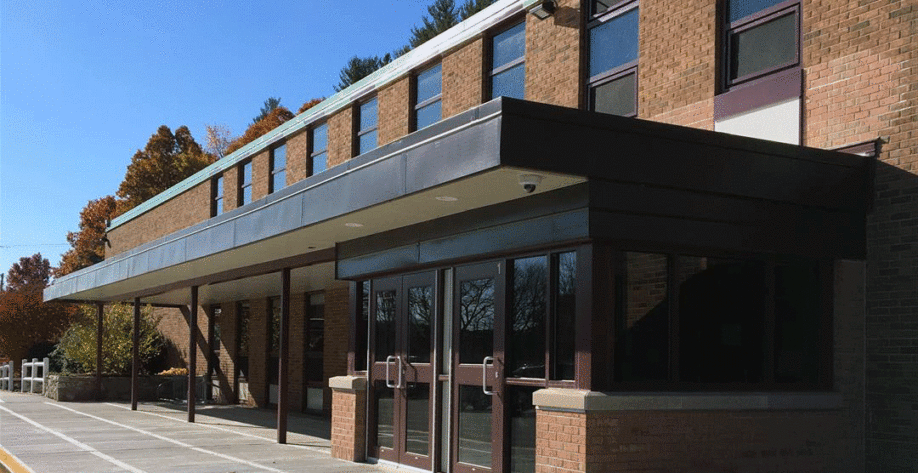
Rising concern for building security, especially at schools, has led to a growing demand for increased safety measures requiring architectural upgrades. As schools, universities, businesses, and other establishments across the country develop more comprehensive emergency response programs, architects and engineers are developing improved methods of design to integrate new building technology to increase the security of buildings. Creating a heightened and more uniform level of safety infrastructure, while maintaining a building’s general aesthetics, has become a major focus of new construction.
The modernization of existing security measures at schools and buildings incorporates the assessment of several factors including main entrances, classroom and other remote entryways, surveillance, and generalized response capabilities in case of emergency. The goals of improving these items include:
- Deterrence: deter unwanted personnel/potential threats from entering the building
- Detection: locate and identify any threats
- Delay: impede or delay the movement of threats throughout the building
- Response: effectively communicate an emergency both internally and externally
Building Assessment
Although buildings are required to conform to design and life safety codes, the hardening of physical structures beyond those required by building codes are not yet standardized. Therefore, it is important that buildings perform threat assessments to determine vulnerabilities in the overall safety infrastructure. Threat assessments may include:
- Hazard Identification: What is the probability of an emergency? What is the potential magnitude?
- Vulnerability Assessment: What assets are at risk? (human life, property, equipment, etc.)
- Impact Analysis: What is the worst-case scenario?
According to the US Energy Information Administration, the median age of commercial buildings in 2012 was 32 years old, with studies showing the median age of school buildings to be even older. As new technology emerges, schools and buildings are updating outdated security infrastructure. Every situation is different, and safety needs should be individually assessed and coordinated with building and maintenance personnel and should include emergency responders. The physical security infrastructure of a building is more effective when coordinated with practiced emergency response plans.

Entrances
Access control is the most important feature of building security. At main entrances, visitors should be guided to a single point of entry where they must be granted access to the building. This can be achieved with vestibules that include key-card access, buzz-in systems, or other means of verification. Specific door types, hardware, and locks can be controlled from a remote location such as the main office. Doors at all exterior locations should be resistant to penetration, may be constructed of solid materials such as steel or aluminum, and should include hardware capable of a full-perimeter lockdown in case of emergency. Controlling access into a building is critical in reducing the number of visitors entering a facility, which is especially important during states of emergency such as natural disasters, pandemics, or lockdown procedures. People who may carry unknown infectious diseases, or pose a threat to the health and wellbeing of building occupants, should be screened at entrances to reduce access and exposure.
Windows
Windows are an important component of building perimeter security. Modern construction often includes large amounts of glass to enhance natural light; however, glass windows and doors are often the most vulnerable parts of a building. Classrooms should have operable windows in case of emergency and should be easy to use. Both classroom windows and doors should be able to lock from the inside. Many options exist for glazing including:
- Laminated Glass: interlayer sandwiched between glass layer, does not prevent breakage but prevents glass from leaving the frame.
- Glass-Clad Polycarbonate: similar to laminated glass, polycarbonate and polyurethane interlayers, most commonly used for extreme impact-resistant applications (detention facilities, museums, jewelry stores, courthouses, etc.)
- Applied Film: holds glass fragments together upon breakage, most commonly used in retrofit applications
- Security Screens: heavy-duty wire mesh screens installed at the exterior, can be made operable for emergency egress
Surveillance
Another main component of building security is surveillance. The natural design of the building should allow for the site perimeter to be easily observed from the interior. Strategic placement of entry points, lighting, and fencing can help deter unauthorized visitors. Landscaping design should incorporate adequate lighting both towards the building and around the premises including parking lots, and plantings should be specifically located to prevent hiding spots close to the building.
Mechanical surveillance may include cameras, motion sensors, CCTV, alarms, and mirrors. Entrance doors should be monitored with security cameras, as well as parking lots, sidewalks, loading docks, roofs, and interior hallways. Surveillance systems, intercoms, and other communication systems, can be utilized in emergency situations to track locations of unwanted visitors and alert building personnel and local authorities.
Buildings such as schools, hospitals, businesses, and other sensitive facilities should be designed to reduce risks to occupants from potentially harmful intruders. Controlled access at entrances combined with well-equipped surveillance systems, both mechanical and natural, can improve a building’s security, and minimize risk factors in case of emergency. State-of-the-art building materials and technology are often incorporated into new construction; however, older buildings can lack the desired level of security of today’s times. Assessing the security of the building, and evaluating what added security measures are needed, is the first step in creating a safer building and community.
Tagged In:
Building Enclosure Design & Consulting
